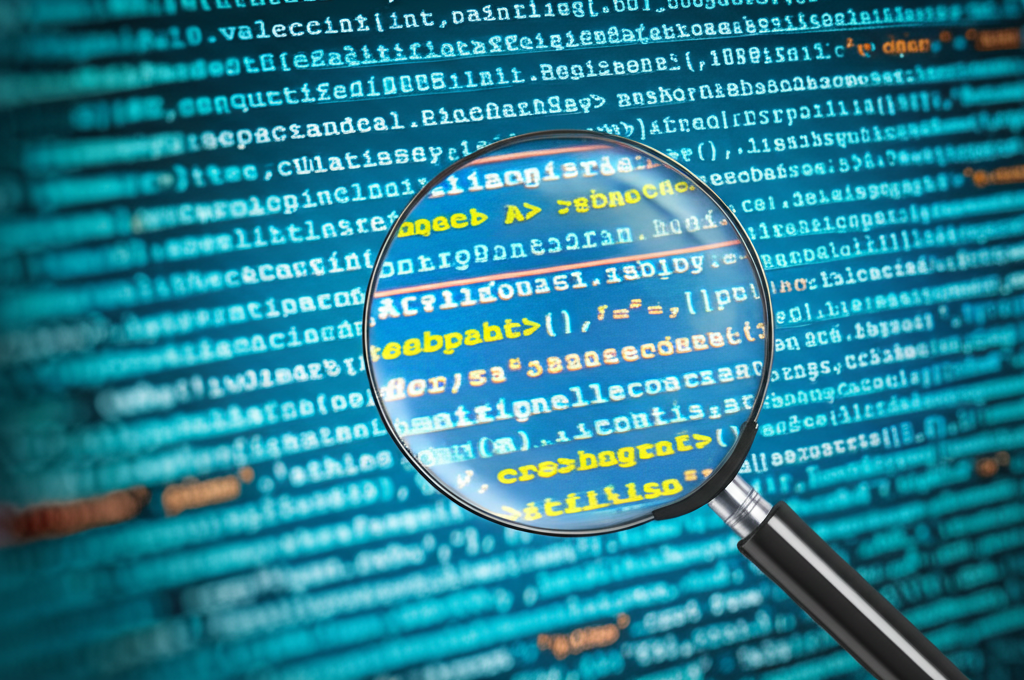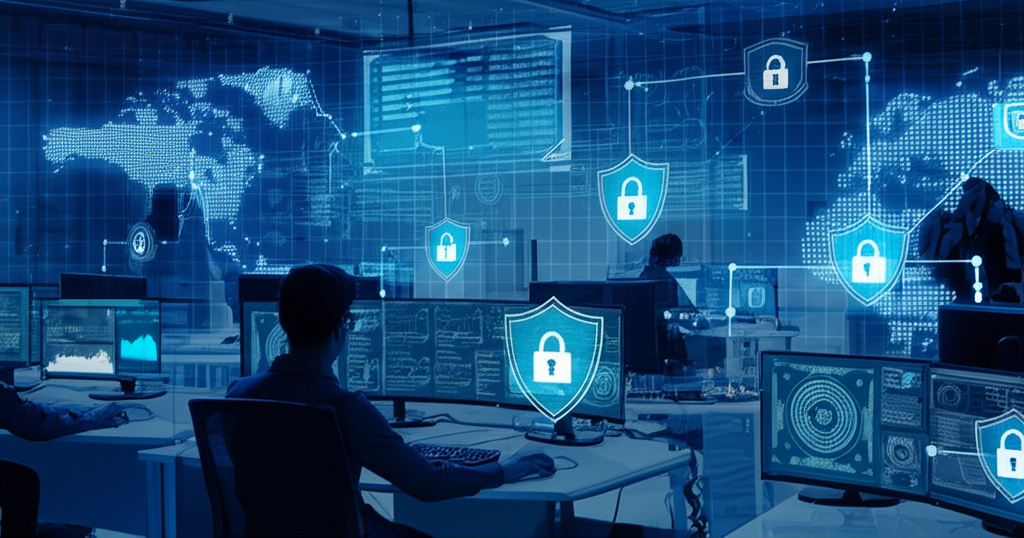
Attention CISOs!
Times Are Changing. It's Time To Update Your Organization's Security Policies and Procedures.
The Security Paradigm Shift of 2025
We stand at the precipice of a new era in cybersecurity. The digital landscape has transformed beyond recognition, and with it, the threats we face have evolved into something more sophisticated, more persistent, and more dangerous than ever before.
The perimeter has dissolved. The network edge has blurred beyond recognition. Your organization no longer exists within defined boundaries—it flows through cloud services, third-party vendors, remote work environments, and AI-powered systems that make autonomous decisions.
"In an age where AI can forge the voice of your CEO and blockchain can secure your most critical transactions, security is no longer about building walls—it's about verifying every digital heartbeat in your ecosystem."
The traditional security model is not just insufficient—it's dangerous. It lulls us into a false sense of security while sophisticated threats move laterally through our systems, exfiltrating data and establishing persistence.
This is why Zero-Trust is no longer optional. It's the foundation upon which modern security must be built. And with the rise of AI and blockchain technologies, we have both new threats to defend against and powerful new tools to incorporate into our security strategy.
This guide will help you navigate this new landscape, providing concrete strategies to update your security policies and procedures for the realities of 2025 and beyond.
Industry Perspective
GitLab's analysis of key security trends for CISOs in 2025 aligns with our findings, highlighting the critical need for adaptive security strategies in the face of evolving threats.
Read GitLab's AnalysisSecurity Landscape 2025
Key trends reshaping the threat landscape and security priorities
AI-Powered Attacks
Sophisticated attacks using generative AI to create convincing phishing and social engineering attempts
Zero-Trust Adoption
Organizations implementing comprehensive zero-trust security frameworks
Supply Chain Attacks
Breaches originating from third-party vendors and software dependencies
Quantum-Resistant Encryption
Organizations preparing for quantum computing threats by implementing new cryptographic standards
Global Security Incidents by Type (2025)
Zero-Trust: The New Security Foundation
The perimeter-based security model is dead. In its place, Zero-Trust has emerged as the essential framework for securing modern organizations. But in 2025, Zero-Trust is no longer just a buzzword—it's a comprehensive approach that must be woven into every aspect of your security strategy.
The Three Pillars of Modern Zero-Trust
Identity-Centric
Identity is the new perimeter. Every access request must be authenticated and authorized based on dynamic identity verification, regardless of source.
Continuous Verification
Trust is never assumed and continuously re-evaluated. Every request, every session, every transaction is verified as if it originates from an untrusted network.
Micro-Segmentation
Network access is limited to specific resources on a need-to-know basis. Lateral movement is restricted through granular access controls and network segmentation.
In 2025, Zero-Trust implementation must go beyond network controls. It must encompass your data, applications, infrastructure, and even your AI systems. Every digital interaction must be verified, validated, and secured.
"Zero-Trust isn't a product you buy—it's a strategy you implement. It's a mindset that assumes breach and verifies explicitly, across every layer of your technology stack."
Zero-Trust Implementation Framework
Key Components
Identity Verification
Multi-factor authentication, biometrics, and contextual authentication
Least Privilege Access
Just-in-time and just-enough access to resources
Micro-Segmentation
Fine-grained network segmentation and application-layer controls
Continuous Monitoring
Real-time visibility and analytics across all resources
Data Protection
Encryption, data loss prevention, and rights management
2025 Zero-Trust Innovations
AI-Powered Authentication
Behavioral biometrics and continuous authentication using AI
Quantum-Resistant Identity
Post-quantum cryptography for identity protection
Decentralized Identity
Blockchain-based identity verification and attestation
Autonomous Security Posture
Self-healing security systems that adapt to threats
Contextual Trust Scoring
Dynamic risk assessment based on multiple factors
CISO Action Plan: Zero-Trust Implementation
- 1
Conduct Zero-Trust Readiness Assessment
Evaluate your current security posture against Zero-Trust principles. Identify gaps in identity management, network segmentation, and continuous monitoring capabilities.
- 2
Develop Identity-Centric Security Strategy
Implement strong authentication, authorization, and identity governance. Deploy MFA, privileged access management, and just-in-time access controls.
- 3
Implement Micro-Segmentation
Segment networks based on application workflows and data sensitivity. Deploy software-defined perimeters and application-layer controls.
- 4
Establish Continuous Monitoring
Deploy AI-powered security analytics for real-time threat detection. Implement behavioral monitoring and anomaly detection across all systems.
- 5
Secure Data and Applications
Implement data classification, encryption, and access controls. Secure applications with runtime protection and API security measures.
AI Security: The Dual Challenge

Securing AI Systems
As AI becomes embedded in critical business functions, securing these systems is paramount. AI models and the infrastructure they run on present unique security challenges that require specialized approaches.
Key Vulnerabilities
Adversarial Attacks
Manipulating AI inputs to produce incorrect or harmful outputs
Model Theft
Extraction of proprietary AI models through API queries
Data Poisoning
Corrupting training data to compromise model integrity
Prompt Injection
Manipulating AI systems through carefully crafted inputs
Protection Strategies
- Implement adversarial training to harden AI models
- Deploy input validation and sanitization for AI systems
- Establish model monitoring for drift and anomalous behavior
- Implement rate limiting and authentication for AI APIs
- Develop AI-specific incident response procedures

AI-Powered Security
AI is not just a security challenge—it's also your most powerful ally. Advanced AI systems can detect threats, respond to incidents, and protect your organization at machine speed and scale.
Transformative Capabilities
Predictive Threat Intelligence
AI systems that forecast emerging threats before they materialize
Autonomous Response
Self-healing security systems that remediate threats without human intervention
Behavioral Analytics
Detection of anomalous user and entity behavior in real-time
Intelligent Automation
Streamlining security operations through AI-powered workflows
Implementation Roadmap
- Assess current security operations for AI augmentation opportunities
- Implement AI-powered threat detection and response systems
- Develop AI governance framework for security operations
- Train security teams on AI capabilities and limitations
- Establish continuous improvement process for AI security systems
AI Security Use Cases
Threat Detection & Response
AI systems that can identify novel attack patterns and respond in real-time
Vulnerability Management
Predictive identification of security vulnerabilities before they can be exploited
Identity & Access Intelligence
Behavioral analysis to detect anomalous access patterns and potential account compromise
Security Posture Management
Continuous evaluation and improvement of security controls and configurations
Blockchain Security: Beyond the Hype
Blockchain technology has matured beyond its early hype cycle and is now a critical component of many enterprise systems. From supply chain management to identity verification, blockchain offers powerful security capabilities—but also introduces new risks that must be managed.

Key Security Applications
Immutable Audit Trails
Blockchain provides tamper-proof records of security events, configurations, and access logs—creating an immutable audit trail that can withstand sophisticated attacks.
Decentralized Identity
Self-sovereign identity solutions built on blockchain enable secure, privacy-preserving authentication without centralized identity providers.
Supply Chain Integrity
Blockchain ensures the integrity of software and hardware supply chains, providing verifiable provenance for critical components.
Secure Multi-Party Computation
Blockchain enables secure collaboration between organizations without exposing sensitive data, through zero-knowledge proofs and secure multi-party computation.
Security Considerations
While blockchain offers powerful security capabilities, it also introduces new risks and challenges that must be addressed in your security strategy:
Key Management Vulnerabilities
Private key theft remains the most significant risk in blockchain systems. Implement hardware security modules and multi-signature schemes.
Smart Contract Vulnerabilities
Flaws in smart contract code can lead to significant security breaches. Implement rigorous code review, formal verification, and security audits.
Consensus Attacks
51% attacks and other consensus vulnerabilities can compromise blockchain integrity. Carefully evaluate consensus mechanisms for your use case.
Oracle Problems
Blockchain systems rely on external data sources (oracles) that can be compromised. Implement decentralized oracle networks and data validation.
"Blockchain is not a security panacea—it's a powerful tool that must be wielded with expertise. The same immutability that makes blockchain secure also makes security flaws permanent if not addressed before deployment."
CISO Action Plan: Blockchain Security
- 1
Assess Blockchain Use Cases
Evaluate where blockchain can enhance your security posture. Focus on use cases with clear security benefits rather than adopting blockchain for its own sake.
- 2
Implement Secure Key Management
Deploy hardware security modules, multi-signature schemes, and key rotation policies. Consider decentralized key management solutions for critical applications.
- 3
Establish Smart Contract Security Program
Implement rigorous code review, formal verification, and third-party security audits for all smart contracts. Develop secure deployment procedures and upgrade mechanisms.
- 4
Integrate with Existing Security Controls
Ensure blockchain systems are integrated with your security monitoring, incident response, and governance frameworks. Develop blockchain-specific security policies and procedures.
- 5
Develop Blockchain Security Expertise
Invest in training and hiring for blockchain security expertise. Partner with specialized security firms for assessments and guidance.
2025 CISO Priority Areas
Key focus areas for security leaders in the current threat landscape
AI Security Governance
Establishing frameworks for responsible AI use and security
Zero-Trust Architecture
Moving beyond perimeter security to continuous verification
Supply Chain Security
Securing the entire software and hardware supply chain
Quantum Readiness
Preparing for the post-quantum cryptographic landscape
Security Automation
Leveraging automation to enhance security operations
Human-Centric Security
Building security culture and reducing human risk
Security Transformation Roadmap
A phased approach to implementing modern security capabilities
Phase 1: Assessment
- Conduct comprehensive security posture assessment
- Identify critical assets and data flows
- Map current identity and access management capabilities
- Evaluate AI and automation readiness
- Assess supply chain security maturity
Phase 2: Foundation
- Implement core zero-trust architecture components
- Deploy enhanced identity verification systems
- Establish AI security governance framework
- Develop security automation capabilities
- Enhance supply chain security controls
Phase 3: Transformation
- Roll out comprehensive zero-trust across all systems
- Implement AI-powered security operations
- Deploy quantum-resistant cryptography for critical systems
- Establish continuous security validation
- Integrate security into DevOps pipelines
Phase 4: Optimization
- Refine security automation with advanced AI capabilities
- Implement predictive security analytics
- Establish continuous security improvement processes
- Deploy advanced threat hunting capabilities
- Develop security innovation program
Security Domain Deep Dives
Explore detailed strategies for key security domains
Identity Security Strategy
Key Challenges
Credential Theft
Sophisticated phishing and social engineering targeting user credentials
Identity Sprawl
Proliferation of identities across cloud services and applications
Privilege Escalation
Attackers exploiting excessive permissions to gain administrative access
Authentication Gaps
Inconsistent MFA implementation across systems and services
Strategic Initiatives
Passwordless Authentication
Implement FIDO2 and biometric authentication across all systems
Just-in-Time Access
Deploy ephemeral, time-limited privileged access management
Continuous Authentication
Implement risk-based, behavioral authentication that adapts to context
Identity Governance
Automate identity lifecycle management and access certification
Implementation Priorities
Immediate
- Enforce MFA across all systems
- Implement privileged access management
- Deploy phishing-resistant authentication
Near-Term
- Implement identity governance
- Deploy just-in-time access
- Establish continuous access monitoring
Strategic
- Implement passwordless authentication
- Deploy decentralized identity solutions
- Establish AI-powered identity analytics
The Path Forward: Security Leadership in 2025
As we navigate the complex security landscape of 2025, CISOs must evolve from technical practitioners to strategic business leaders. The security challenges we face are not merely technical problems—they are business risks that require a holistic approach.
"The most effective security leaders of 2025 are those who can translate technical security concepts into business value, who can build security into the fabric of the organization, and who can leverage emerging technologies to stay ahead of evolving threats."
The security paradigm has shifted. We can no longer rely on perimeter defenses and static controls. We must embrace Zero-Trust principles, leverage AI and blockchain technologies, and build security into every aspect of our organizations.
The future of security is not about building walls—it's about creating adaptive, intelligent systems that can protect our organizations in a world of constant change and evolution. By embracing this vision and implementing the strategies outlined in this guide, you can lead your organization to a more secure future.